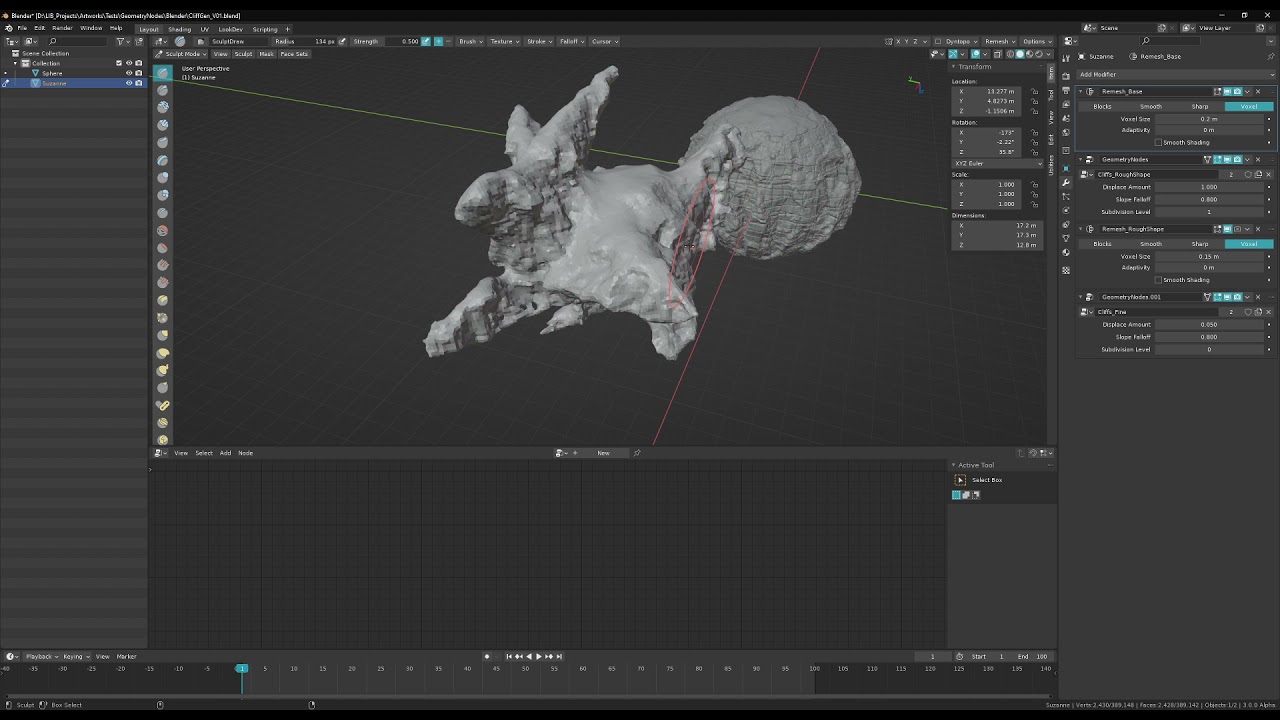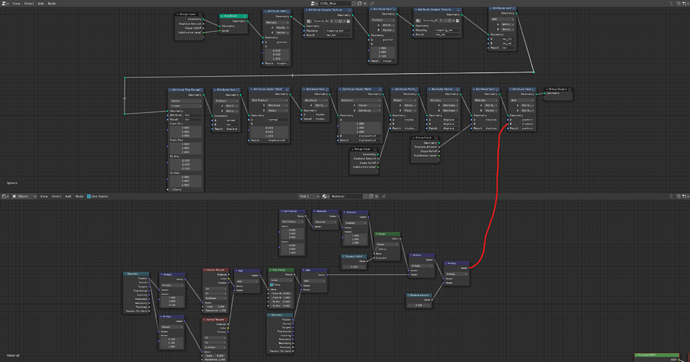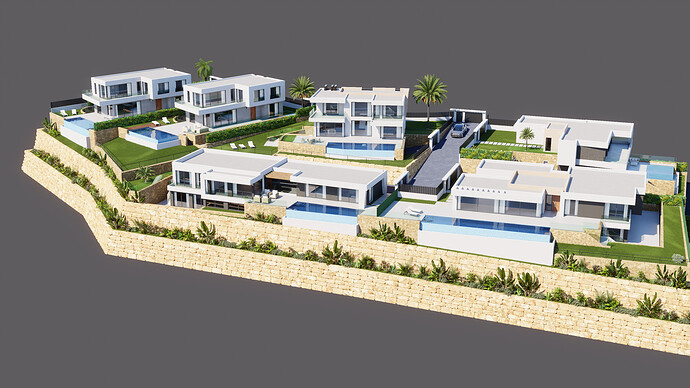Uh? They seem to be quite far from production ready. One indie studio that does inhouse project for no client without any clear deadline and risk of losing money and/or client changes/requirements is not representative of what most of us consider production.
The main goal in production is efficiency. Not just whether you can do something, but whether you can do it in reasonable time at reasonable quality. The time is the biggest issue with geometry nodes currently.
But anyway, what about the blue node slots? Why aren’t they on the todo list?
Right now, for me personally, the biggest obstacle is how laborious are even the most trivial things to achieve, such as my cliff generator:
Instead of multiple node networks of annoying to build long snakes like this:
Where I constantly have to suck hard on my thumb to suck out names for temporary attributes, why can’t I just do something I’d do in the shader editor, and plug it in the blue nodeslot?
Instead of linear chains of attribute math nodes, why can’t I do this?
This would make things so much easier, if I could work with the fundamental data types in the same way I can in the shader editor. What’s on the bottom should be more or less equivalent of what’s on the top, yet much more readable and faster to put together. (Yes I do realized some things are wrong, such as Map Range destroying vector since it’s a float type, but shader editor doesn’t have Vector Map Range)
Now, to be perfectly clear, to avoid any confusion. I do not mean using shader node graph results in geometry nodes graph. I literally mean being able to use geometry nodes graph like I use shader nodes graphs.
The way one constantly needs to keep the names of attributes in their mind and construct the node network flow internally in their head, because the geometry nodes graph is not representative of data flow at all just causes too much mental fatigue for the process to ever be efficient. I mean at this point, why are geometry nodes even node editor, when having them as nodes is pointless? It could be just vertical stack of attribute operators. The power of node editors actually comes from the ability to use them as such. And currently, unfinished design of geometry nodes goes against that.
What I find confusing is that you are talking about geometry nodes as if the design was more or less done, and it was just missing more content. That’s scary.




